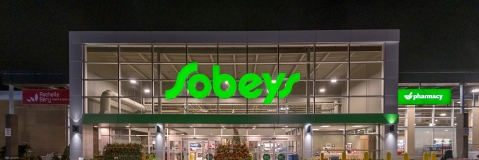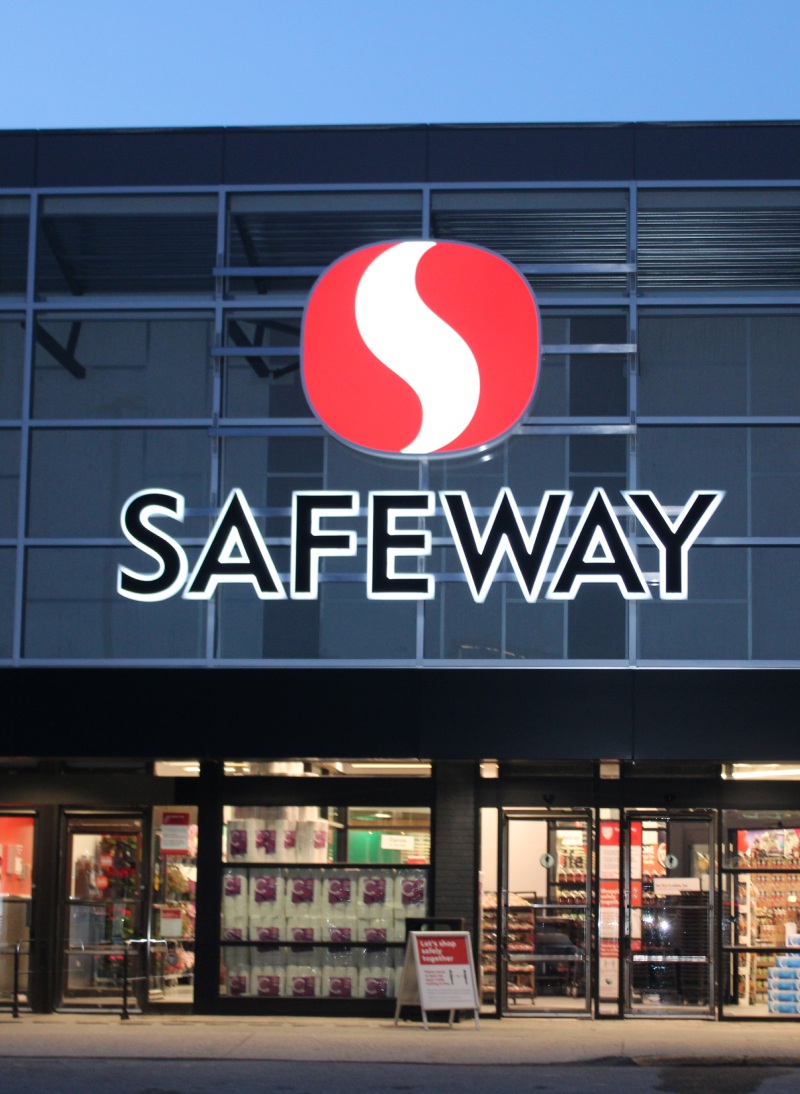Net-zero by 2040 with validated science-based targets *
*for Scope 1 and 2 emissions, and net-zero for Scope 3 emissions by 2050
Taking real steps to tackle the climate crisis is one of our most important goals as part of the broader Canadian and global community. As the United Nations’ latest Intergovernmental Panel on Climate Change report states clearly, now is the time for decisive action, firm targets and achievable plans that can lead to meaningful emissions cuts and decarbonization. We have a bold plan to achieve net-zero by 2040 for our Scope 1 and 2 emissions and net-zero by 2050 for Scope 3 emissions.
 Analyst Spotlight
Analyst Spotlight Our Approach
As identified in our most recent materiality assessment, addressing climate change is one of the top priorities for our stakeholders, and it has been included in our long-term goals and strategy.
We listened to this feedback and have taken action to set emissions reduction targets as some of our most critical ESG goals. We also believe that setting climate targets helps us reduce exposure to carbon pricing and any pending mandates on emissions reductions.
Our Climate Action Plan is aimed at meaningfully reducing our direct and indirect greenhouse gas (GHG) emissions and beginning our transition towards decarbonizing our business and value chain. It clearly demonstrates how doing OurPart™ to tackle
Our Climate Action Plan is aimed at meaningfully reducing our direct and indirect greenhouse gas (GHG) emissions and beginning our transition towards decarbonizing our business and value chain. It clearly demonstrates how doing OurPart™ to tackle climate change is a priority for our entire business, starting with oversight from our Board to leadership from our executives and actions across our business.
climate change is a priority for our entire business, starting with oversight from our Board to leadership from our executives and actions across our business.
Our plan is built around validated science-based targets (SBTs) that meet the requirements of the Paris Agreement.
Our Targets |
Net-Zero Targets:
|
Near-term Targets:
|
Aligning Our Targets to the Science-Based Targets Initiative
We have received validation of our Scope 1 and 2 near-term climate targets through the Science Based Targets initiative (SBTi), an internationally recognized body that provides standards and guidance for organizations to set targets aligned with the latest climate science. As of April 2023, more than 4,700 organizations across multiple sectors around the world have committed to setting science-based targets.
Here’s how our near-term targets align with SBTi requirements:
Scope 1 and 2 GHG Emissions Reduction Target:
- Near-term by 2030 (baseline 2019)
- Absolute emissions reduction
- Calculated using SBTi’s absolute contraction approach, which means an equal annual rate of absolute emissions reduction
- Includes all Sobeys Inc. Scope 1 and 2 emission sources1
Scope 3 GHG Emissions Reduction Target:
- Covers two-thirds of total Scope 3 emissions
- For Purchased Goods and Services: Calculated using SBTi’s supplier engagement-based target approach; Near-term by 2027 (baseline 2019)
- For Use of Sold Products: Scope 3 emissions from fuel sold aligned to a “well below 2°C” trajectory; Near-term by 2030 (baseline 2019)
- Includes all material Empire and Sobeys Inc. Scope 3 emission sources
Empire & Sobeys Inc. Greenhouse Gas Emissions
Estimated Emissions Summary (tonnes CO2e) 1
| Scope | CY 2022 | CY 20216 | CY 20206 | CY 20196 | % difference (CY 2022-2021) |
% difference (CY 2022-2019) |
|---|---|---|---|---|---|---|
|
Scope 1 2,3 |
CY 2022
400,460 |
CY 20216
360,880 |
CY 20206
453,730 |
CY 20196
389,840 |
% difference
(CY 2022-2021) 11% |
% difference
(CY 2022-2019) 3% |
|
Scope 2 4 |
CY 2022
232,360 |
CY 20216
262,960 |
CY 20206
277,010 |
CY 20196
357,030 |
% difference
(CY 2022-2021) -12% |
% difference
(CY 2022-2019) -35% |
|
Scope 3 5 |
CY 2022
23,912,430 |
CY 20216
25,333,500 |
CY 20206
23,323,400 |
CY 20196
23,411,010 |
% difference
(CY 2022-2021) -6% |
% difference
(CY 2022-2019) 2% |
|
Total Scope 1,2, & 3 |
CY 2022
24,545,250 |
CY 20216
25,957,340 |
CY 20206
24,054,140 |
CY 20196
24,157,880 |
% difference
(CY 2022-2021) -5% |
% difference
(CY 2022-2019) 2% |
|
Total Scope 1 & 2 |
CY 2022
632,820 |
CY 20216
623,840 |
CY 20206
730,740 |
CY 20196
746,870 |
% difference
(CY 2022-2021) 1% |
% difference
(CY 2022-2019) -15% |
|
Scope 1 & 2 Intensity (kg CO2e/sq ft) |
CY 2022
26.4 |
CY 20216
26.4 |
CY 20206
30.1 |
CY 20196
32.5 |
% difference
(CY 2022-2021) 0.13% |
% difference
(CY 2022-2019) -18.8% |
Please Note:
- We use the GHG Protocol to calculate our emissions. 2019-2022 GHG inventory includes all Sobeys Inc and Empire grocery and related business banners in operation since 2019, including corporate and franchise sites.
- Scope 1 emissions sources encompass natural gas, propane and fuel oil used for heating and operations in our stores, retail support centres and offices, as well as refrigerant emissions, fuel from corporate and Voilà fleet, and diesel in onsite generators.
- Scope 1 emissions from refrigerant leakage includes our corporate grocery sites where maintenance service providers are integrated with our maintenance tracking and data management system. We will be enhancing our data collection processes over the next year as we continue to work with our service providers to expand coverage of this emissions source.
- Scope 2 emissions source encompasses electricity consumption.
- Scope 3 emissions sources encompass purchased goods & services, capital goods, fuel and energy related activities (not included in Scope 1 or 2), upstream transportation and distribution, waste generated in operations, business travel, employee commuting, downstream transportation and distribution, use of sold products, franchises and investment.
- Reported emissions for CY19, CY20 and CY21 have been recalculated for improved accuracy in accordance with our internal greenhouse gas methodology document and in alignment with guidance from SBTi. Over the past year, we have improved our data collection methodology for Mobile combustion emissions and re-assessed the data used to calculate Scope 3 Category 1 emissions (Purchased Goods and Services) to remove double counting.
CY 2022 Estimated Emissions Breakdown
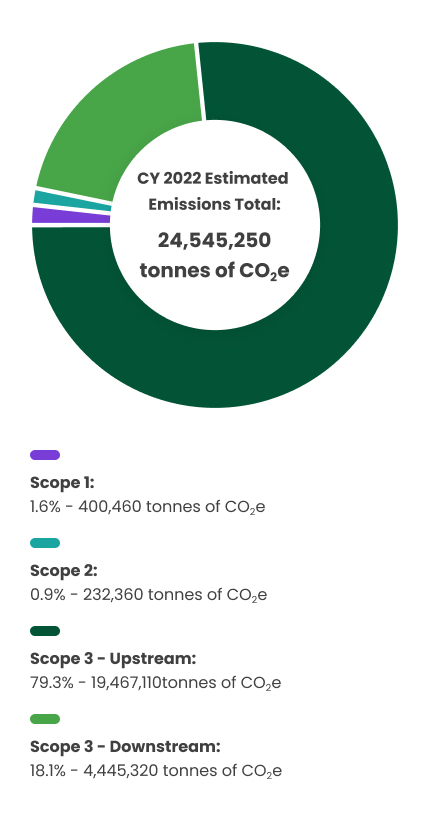
CY 2022 Estimated
Emissions Total:
24,545,250
tonnes of CO2e
Scope 1, 2 and 3 GHG Emissions Trends and Performance Against Targets
We annually evaluate and improve our methodology for data collection and calculations. This helps to ensure that we are using the most complete data possible, continuously improving our accuracy, transparency, and consistency, and evaluating future actions for data improvement year-over-year.
Scope 1 and 2 Emissions:
As shown by our emissions summary table, we are making progress towards our targets to reduce Scope 1 and 2 emissions, demonstrating the impact of our ongoing investments in energy efficiency.
We continue to see a downward trend in combined Scope 1 and 2 emissions (reduction of 15 per cent in calendar year 2022 compared to our 2019 base year), primarily due to reductions in Scope 2 emissions. These reductions were driven by:
- Energy performance: Overall energy consumption (natural gas and electricity) continues to decline due to energy efficiency projects across the business.
- Grid Decarbonization: Scope 2 emissions continued to decrease due to grid decarbonization, particularly in Alberta, Nova Scotia and Ontario.
The year-over-year fluctuation in Scope 1 emissions is driven primarily by fugitive emissions (refrigeration-related emissions) and mobile combustion emissions (fuel consumption in company owned vehicles). Data improvements in capturing refrigerant leakages and improving our methodology for data collection on fuel consumption for company-owned vehicles have impacted year-over-year values for Scope 1 emissions. Our focus on addressing refrigeration emissions and fleet electrification (amongst other fleet-related activities) will help to reduce Scope 1 emissions.
Scope 3 Emissions:
Year-over-year Scope 3 emissions decreased by 6 per cent from 2021 but have increased by 2 per cent compared to our 2019 base year. Purchasing goods and services are our biggest drivers of emissions. We are continuously improving the accuracy of the data used to estimate emissions in this category. The fluctuation in the Scope 3 data is primarily due to an improvement in our methodology for estimating emissions, based on expenditure data. Our work with supplier partners through the CDP Supply Chain program will lead to a more granular understanding of Scope 3 emissions calculation and reduction opportunities in the coming years.
GHG Emissions Assurance
In fiscal 2022, the Audit Committee of our Board of Directors updated the Committee’s mandate to include review of applicable metrics and information contained in our annual Sustainable Business Report. Over the past year, we have focused on documenting and improving the processes and controls for all metrics in this Report, including our GHG emissions data. This work, along with increased engagement and oversight from the Committee, builds a strong foundation to pursue limited assurance of our Scope 1 and 2 GHG emissions data, which we aim to do over the coming years.
Climate Action Plan: Phase 1
During Phase 1 of our plan, from fiscal 2024 to fiscal 2026, we will be working to achieve our near-term targets by focusing on areas that are most critical to our emissions output.
Reducing Emissions from our Sites
We aim to reduce Scope 1 and 2 emissions by 2030 through projects primarily focused on decarbonizing our corporate stores, offices and warehouses. Although our focus will be aimed at corporate locations, we will also support our franchisee and affiliated owners in their transition to lower carbon solutions. To achieve this, we will build on our proven Energy Efficiency Initiative, which was initiated in 2019 to reduce energy consumption at our sites. We will prioritize energy efficiency projects and transition to refrigerants with low or no global warming potential (GWP) for all new stores and most renovation projects beginning in fiscal 2024. We also aim to develop a comprehensive strategy to make informed decisions and guide our actions on renewable energy by piloting the following new initiatives:
- Emissions from refrigerants:
We are prioritizing a transition to refrigerants with low or zero GWP for all new corporate stores and most renovation projects. At this time, 16 per cent of our corporate stores, including Farm Boy and Longo’s, have transitioned to CO2 refrigerants. We have two pilot stores trialling a combination of propane and hydrofluoro-olefin (HFO) refrigerants. HFO has significantly lower GWP compared to traditional hydrochlorofluorocarbons (HFC). We have another pilot store evaluating the effectiveness of 100 per cent propane use. In the coming year, we plan to retrofit additional locations through actions such as reducing leak rates, and completing more HFC to HFO gas replacement projects. - Improving energy efficiency:
We continue to focus on energy efficiency in our stores and distribution centres. We are taking steps to reduce energy consumption and optimize the efficiency of our buildings through high-impact projects. Initiatives planned for fiscal 2024 include ongoing lighting retrofits, upgrades to HVAC controllers, and high efficiency, variable speed HVAC motor systems installations. In addition, we will upgrade our building management software by harnessing the power of artificial intelligence and machine learning (AIML) technology. By using data analytics, machine learning algorithms, and predictive models, AIML can help us identify energy efficiency opportunities, automate processes, reduce equipment failures and optimize energy systems to reduce costs and environmental impacts. - Transitioning to renewable energy:
Renewable energy is an important component of our roadmap to decarbonize our operations. We are prioritizing our activities in targeted provinces, taking the carbon intensity of provincial grids into account. In fiscal 2024, we plan to deliver solar rooftop projects in corporate stores in Nova Scotia. Beyond these projects, we aim to mobilize a portfolio of renewable energy projects, including the purchase of renewable energy, to address Scope 2 emissions and establish leadership in the Canadian marketplace.
Reducing Emissions from Our Vehicle Fleet
We are taking steps to electrify our fleet. In fiscal 2024, we will pilot electric vehicle (EV) Class 8 trucks for our fleet in Quebec, and we are currently sourcing EV solutions for our e-commerce business.
Engaging Our Supplier Partners on Climate Action
We’re aiming for a minimum of 64 per cent of suppliers, by spend, to set science-based targets on their Scope 1 and 2 emissions by the end of calendar year 2027. As a first step in achieving this target we’ve partnered with the CDP Supply Chain program. This enables us to provide practical resources to our supplier partners so they can measure and disclose their GHG emissions and have access to resources to support them with target-setting. To support the launch of CDP Supply Chain, in fiscal 2023 we ran Climate Action training with all our supplier-facing teams in merchandising and strategic sourcing.
Shared Responsibility
Not all our supplier partners are at the same stage in their emissions-reduction journey, which is why we are taking a thoughtful and supportive approach to make progress towards greater consistency and collaboration. This includes maintaining an open dialogue with supplier partners to understand their progress towards setting science-based targets, clearly communicating our targets and plan, and working collaboratively to build capacity and shared understanding.
Our long-term goal is to achieve Scope 3 is net-zero emissions by 2050, which will require decarbonizing our entire supply chain. Our alignment with the CDP Supply Chain program will play an important role in helping us achieve our Scope 3 targets, enabling us to improve Scope 3 data measurement and better understand our suppliers’ emissions and progress.
Our second Scope 3 target is to reduce emissions from fuel sold by 28 per cent by 2030. The federal government’s Clean Fuel Regulations will support this target. The balance of this emissions reduction work will be achieved through collaboration with our fuel suppliers.
The scale and challenge of decarbonizing our supply chain is significant and will require transformational change. Indeed, our Climate Action work will impact our assortment in the years to come as we work towards the goal of net zero Scope 3 emissions by 2050. Growing our assortment of lower carbon foods and products, working with producers and suppliers on food production practices, such as regenerative agriculture, and continuously improving data capture and tracking will all play an increasingly important role in our efforts to decarbonize. We cannot achieve our Scope 3 emissions reductions alone. Collaboration, partnership and action from suppliers, industry, government and customers are needed to achieve a more sustainable and low-carbon future. We remain committed to working collaboratively to decarbonize grocery supply chains in Canada and beyond.
Climate Risks & Opportunities
Climate change may pose adverse impacts to our business, including to our stores, offices and warehouses and to our supply chain. We have identified and described our management approach to climate-related risks and opportunities in alignment with the recommendations of the Task Force on Climate-related Financial Disclosures (TCFD) in our new TCFD Report. Conducting an assessment according to the TCFD recommendations enables us to better understand our potentially material climate-related risks and integrate them into our Enterprise Risk Management approach, financial planning process and resilience building.

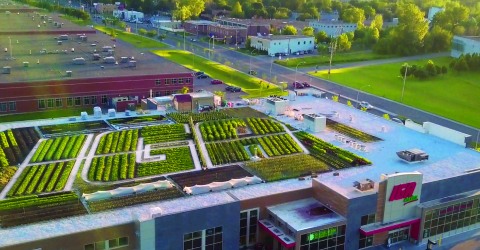
Highlights
Expanding Solar Rooftops
Our Longo’s team is committed to working with building partners to ensure that all new stores and major renovations incorporate efficient technologies and features to ensure sustainable operations. To date, Longo’s has installed solar panels at eight stores and at the team’s Support Centre, turning under-utilized rooftops into clean-energy generating stations. In 2022, Longo’s generated 1,619,208 kWh of solar energy—enough energy to power 140 homes for a year. *
*Calculated using the US EPA GHG equivalency calculator
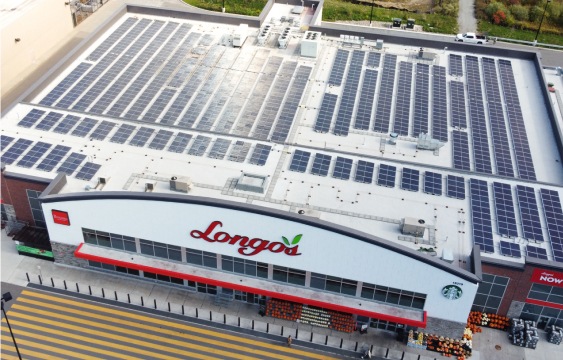
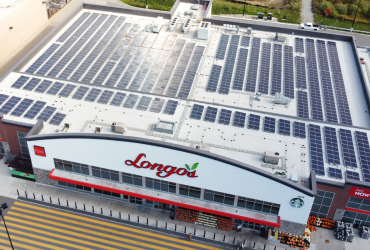
Champions
At Longo’s, our purpose of fueling happy and healthier lives guides everything we do. This includes our approach to sustainability and our focus on reducing the environmental impact of our business. Our team is committed to reducing greenhouse gas emissions and operating our buildings sustainably.”
Sara Olivieri, Sustainability Specialist, Longo’s



Learn More
Our work to tackle climate change includes our focus on food waste, energy management and environmental management.
As a family nurturing families, we want to ensure Canadians are taken care of today, tomorrow and in the future. By doing OurPart™ for the environment, we hope to inspire our customers to do theirs. Every step we take together—big or small—can make a difference.
Learn More
